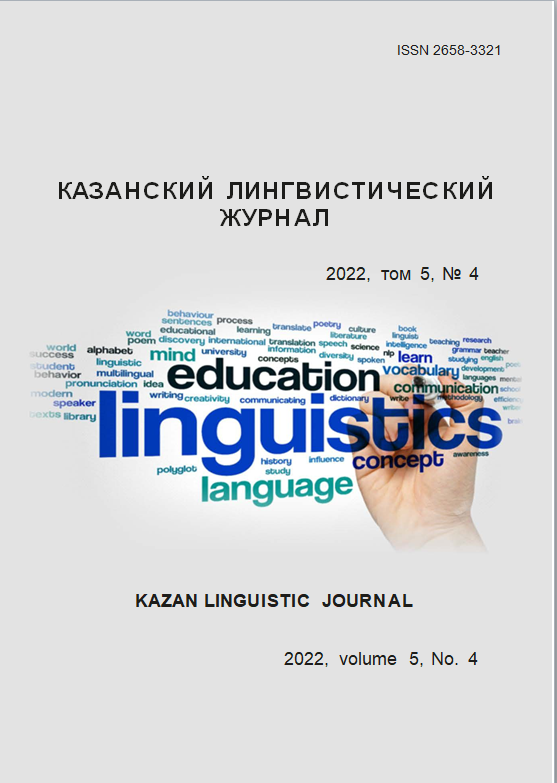Metaphorical Conceptualization of Phraseological Units about Healthy/Beautiful Women in the Chinese Language and Features of their Translation into Russian
https://doi.org/10.26907/2658-3321.2022.5.4.512-522
Keywords:
metaphor, cognitive method, picture of the world, Russian, Chinese, intercultural communicationAbstract
This article presents a conceptual analysis of Chinese phraseological units about beautiful/healthy women using the mechanism of metaphorical transfer as the most important cognitive tool for describing language units. The relevance and novelty of the article lies in the fact that for the first time a unique category of phraseological units is considered, which specializes in the representation of the canons of female beauty and which is inextricably linked with the concept of "health". The authors conclude that metaphorical conceptualization is closely related to the subjective experience and cultural background of the subject of knowledge, and the language itself, in the process of reflecting the world, is endowed with rich metaphorical and cultural connotations, as a result of which it becomes a source of information for studying national culture, psychology and worldview.
The purpose of the study is to analyze the metaphorical mechanism for representing these phraseological units, to reveal the peculiarities of understanding the worldview of the Chinese people as a whole, to promote understanding of Chinese culture and thinking in intercultural communication.
References
References
Humboldt V. Von. About the difference in the structure of human languages and its in-fluence on the spiritual development of mankind. His own. Russian and English languages. Selected works on Linguistics. M.; 1984. pp. 99-104.
Arsentieva E.F. Comparative analysis of phraseological units stylistically oriented to a person in Russian and English languages and issues of creating a Russian-English phraseological dictionary: dis. ... Dr. phil. sciences. Kazan; 1993. 476 p.
Gorodetskaya I.A. Somatic component of phraseological units of Russian and French languages. Vestnik Stavropol'skogo gosudarstvennogo universiteta. 2007. No. 51. pp. 162–166.
Reichstein A.D. Comparative analysis of German and Russian phraseology. M.: Higher School;1980.142 p.
Lakoff G., Johnson M. Metaphors We Live By. Chicago:University of Chicago Press; 1980. 256 р.
Richards I.A. The Philosophy of Rhetoric. Oxford University Press; 1936. 138 р.
人是植物”概念隐喻的身体性认知机制阐释,Explanation of the Body Cognitive Mechanism of the Conceptual Metaphor of “PEOPLE ARE PLANTS”,段静宜,Duan Jin, 吉林省教育学院学报,Vestnik Instituta obrazovaniya provintsii Tszilin'. 2019, 35(12).
美女篇》,曹植. Available from: https://so.gushiwen.cn/mingju/juv_5bc992122e1b.aspx
红楼梦》,曹雪芹. Available from: /https://www.newxue.com/mingrenmingyanmingju/134459021619613.html
诗经•硕人》. Available from: https://so.gushiwen.cn/mingju/juv_5dd2ccc99099.aspx
孔雀东南飞》. Available from: https://so.gushiwen.cn/mingju/juv_c26a262e5283.aspx
周敦颐《爱莲说》. Available from: https://www.gushiwen.cn/mingju_1102.aspx
长恨歌》,白居易. Available from: https://www.jianshu.com/p/5b411a9b8a1c
水仙子•梅边即事好》,张可久. Available from: https://www.gushiwen.cn/GuShiWen_4109b5e13f.aspx
杂诗七首•其四,曹植. Available from: https://so.gushiwen.cn/shiwenv_2b832f229933.aspx
曹雪芹,警幻仙姑赋. Available from: https://www.gushimi.org/gushi/7758.html
认知视角下的英汉动物隐喻分析. Analysis of English-Chinese metaphors with an-imal names from a cognitive point of view. 那剑Nazian,汉字文化 Hieroglyphs and Culture, 2019 (11).






